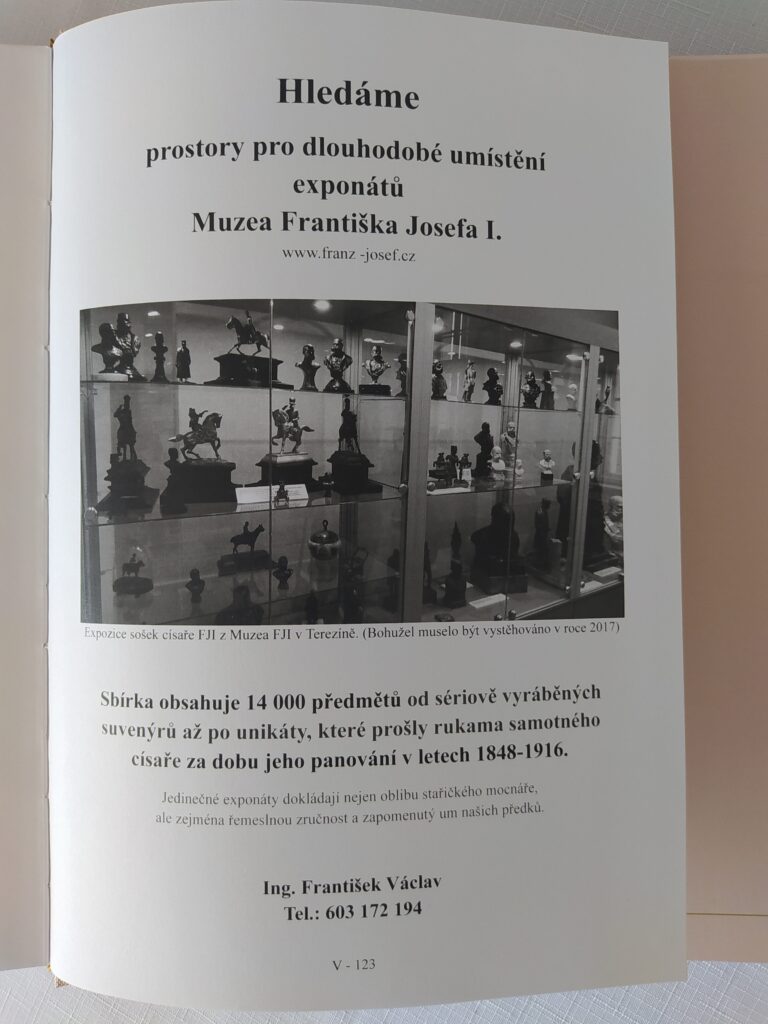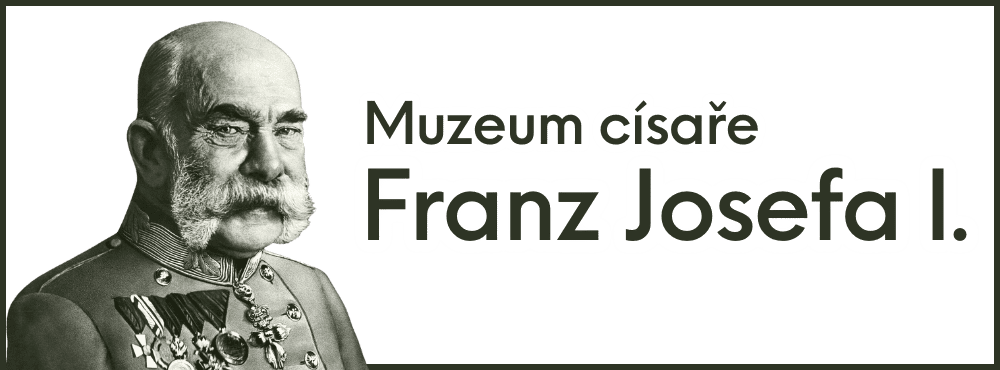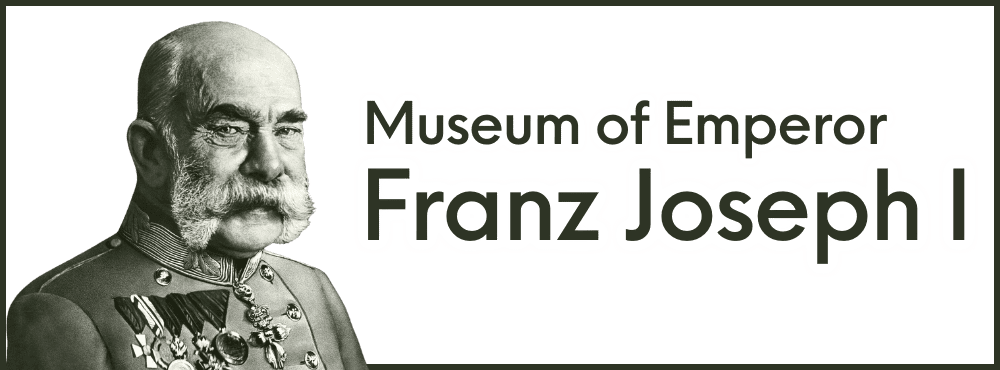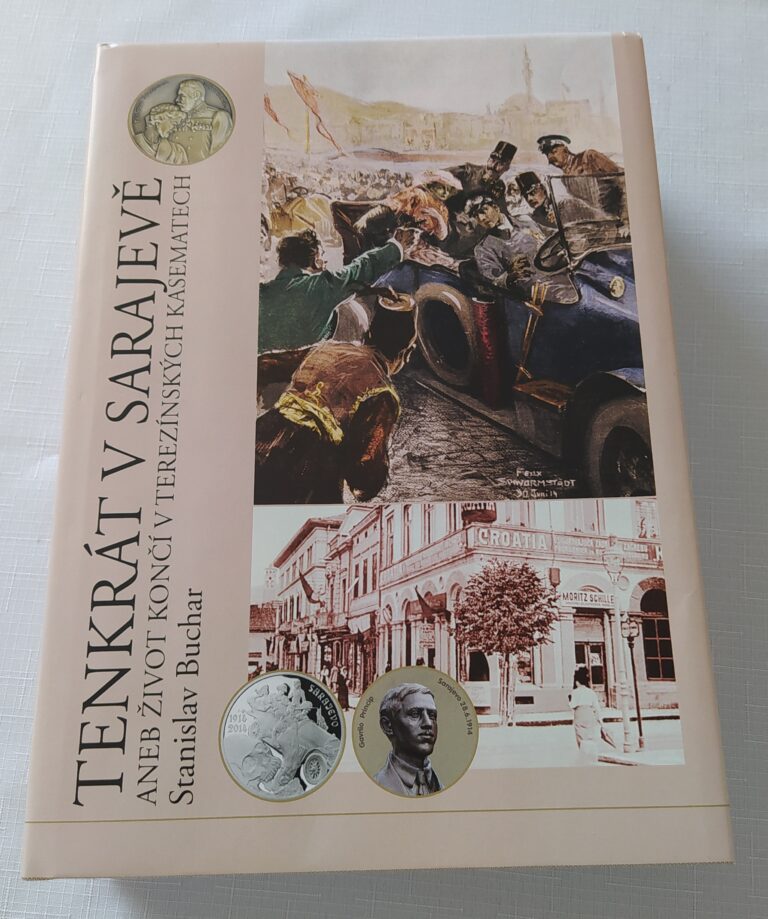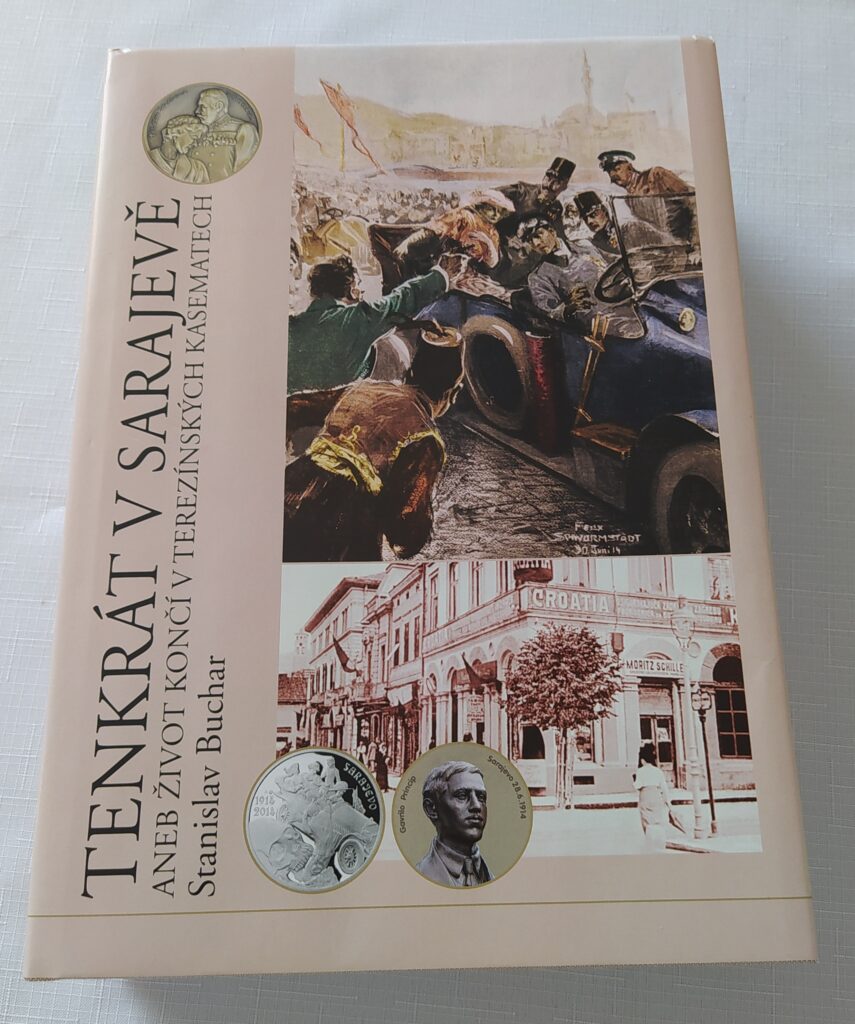
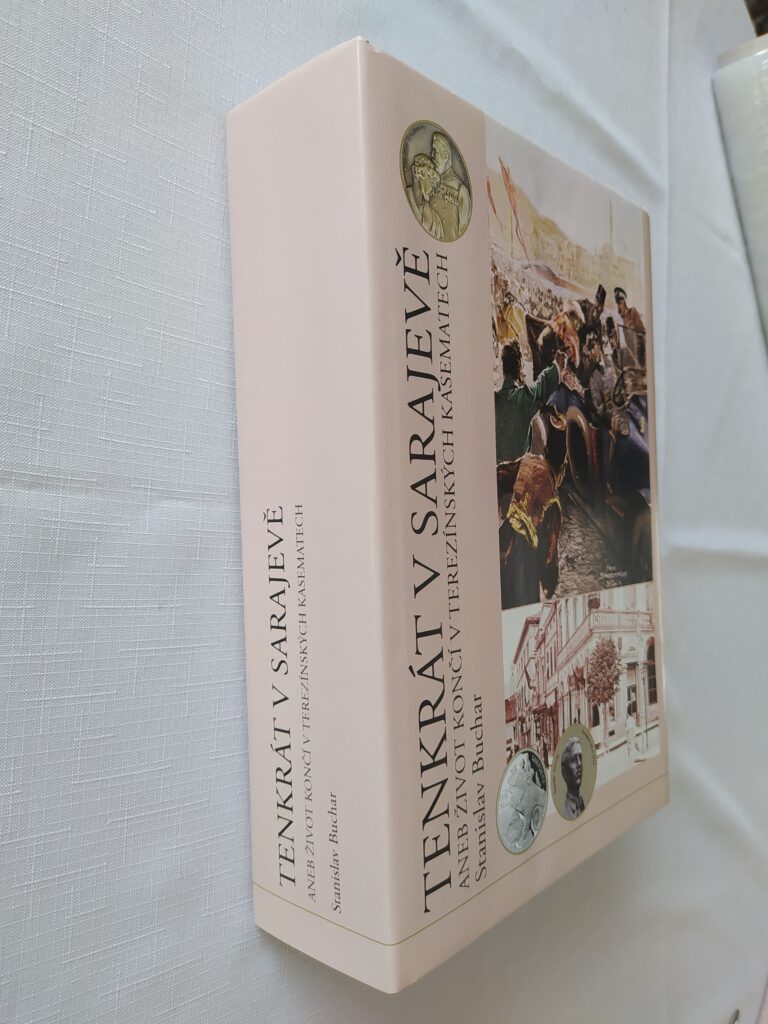

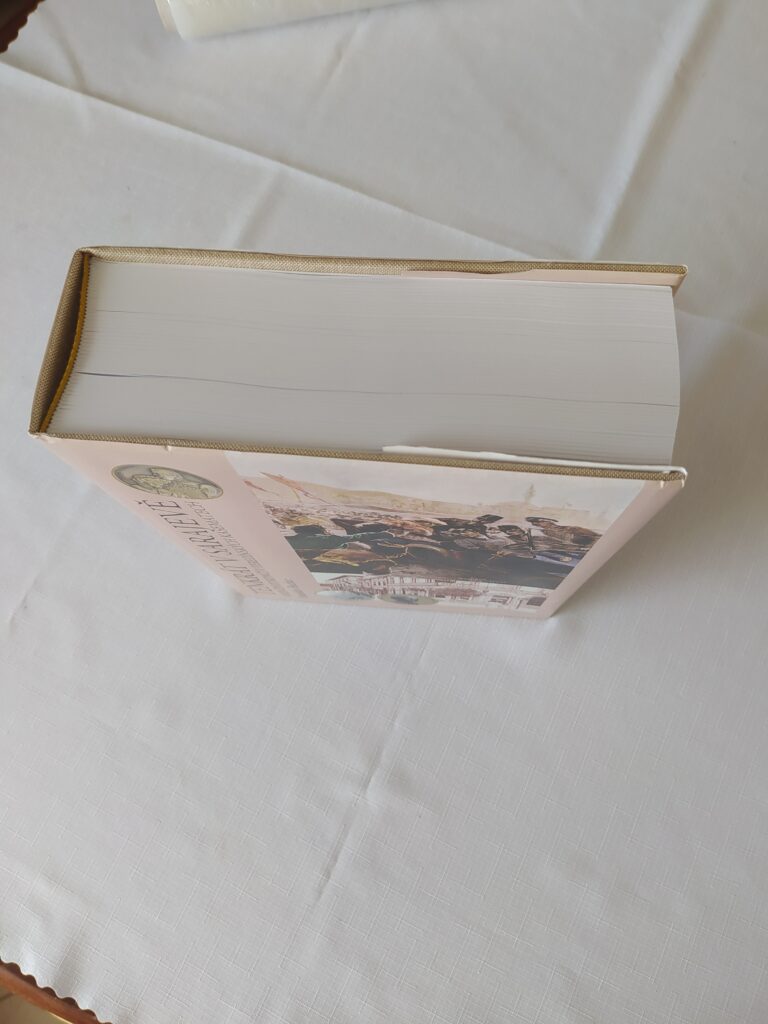

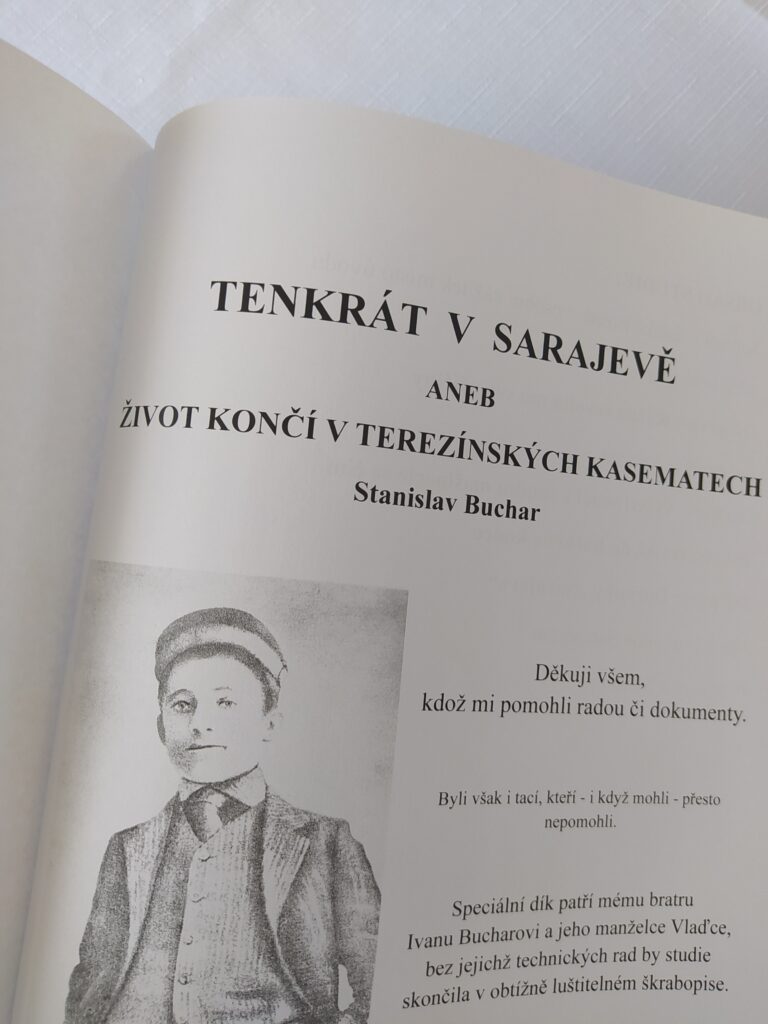

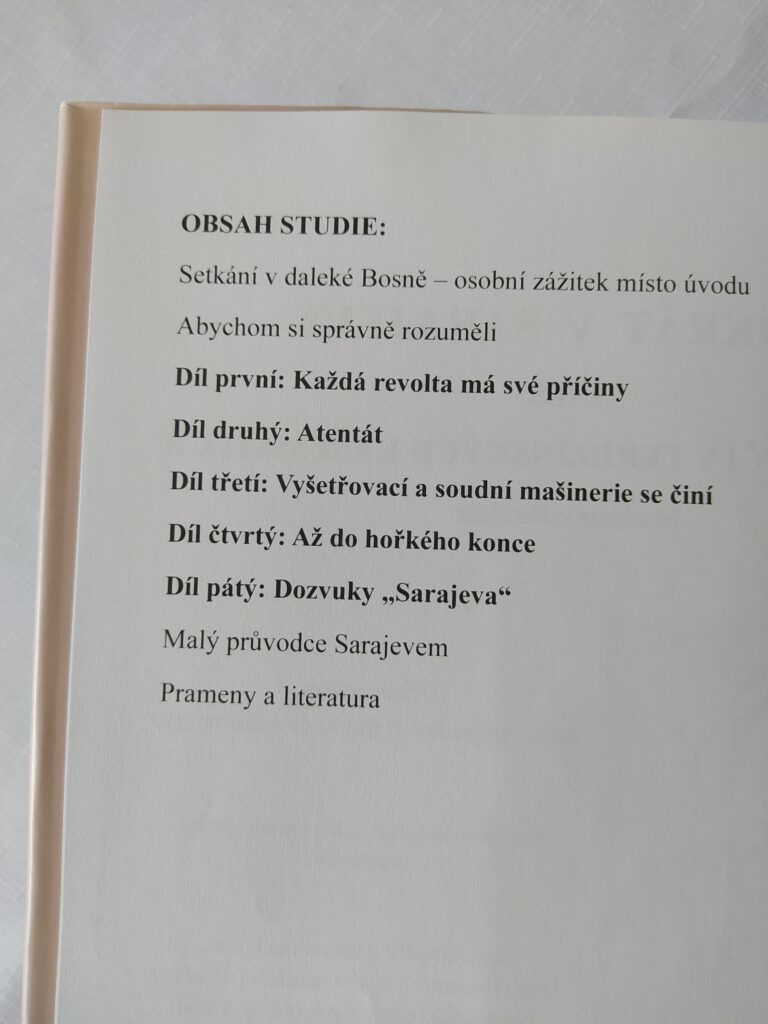

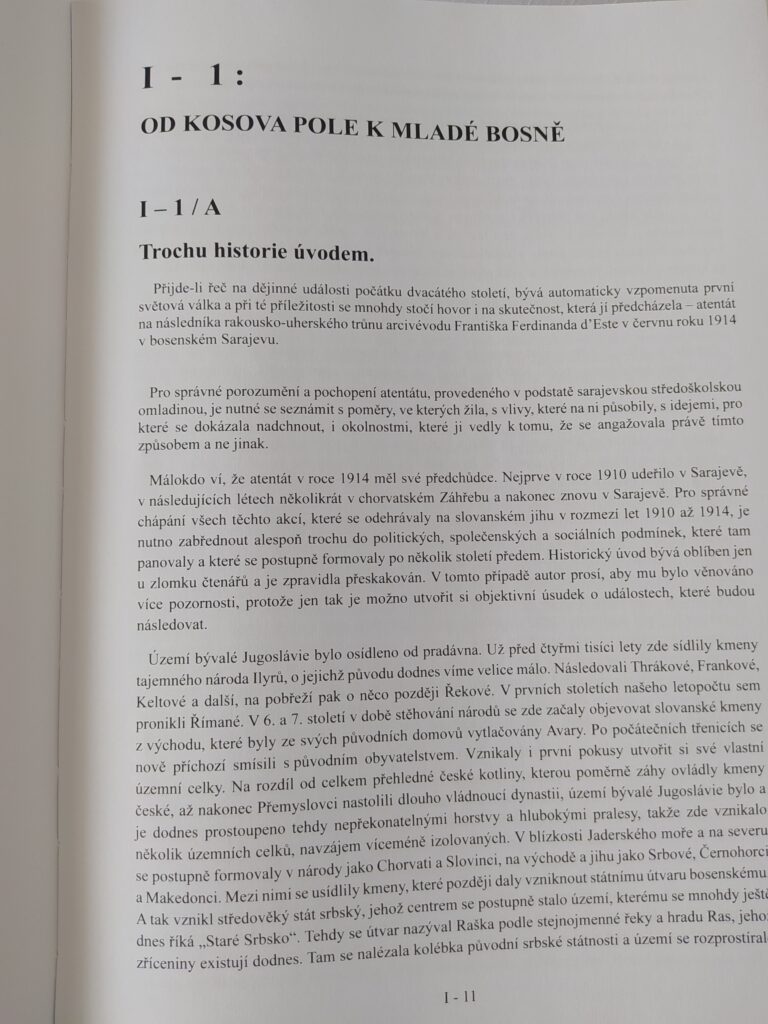

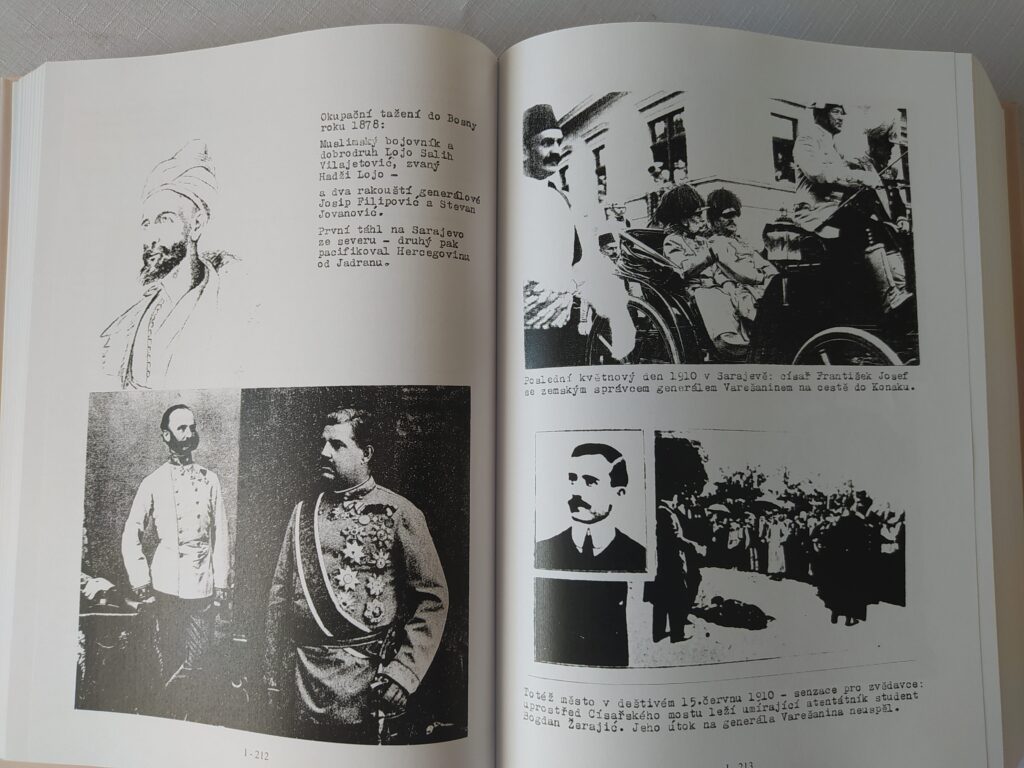

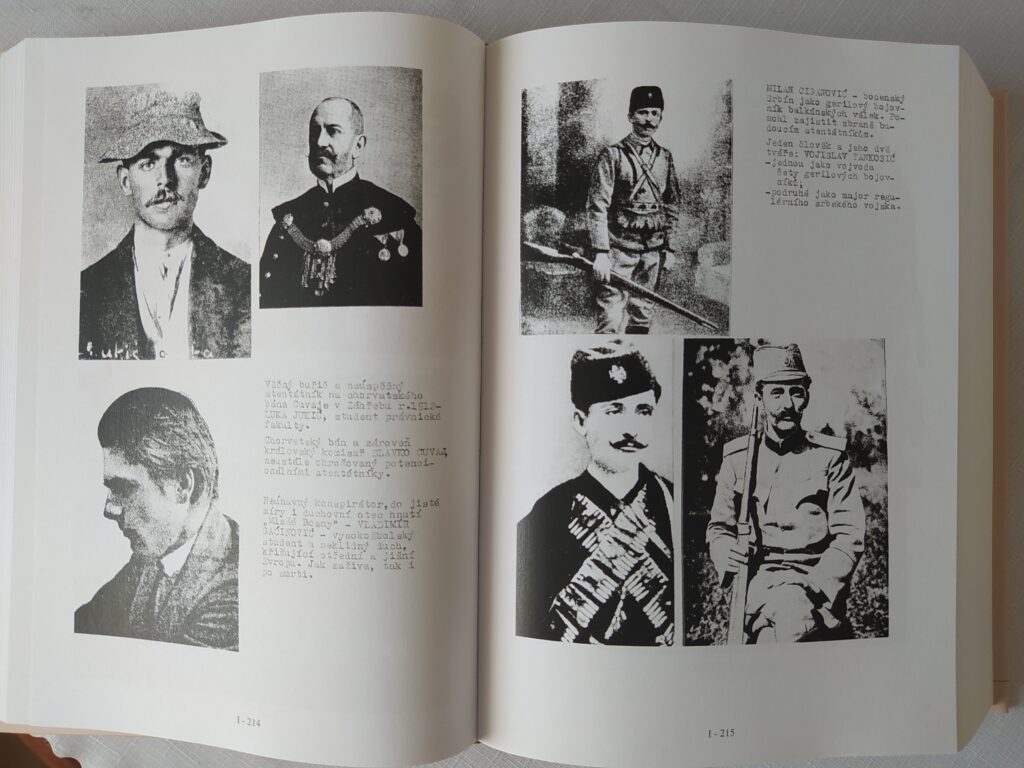

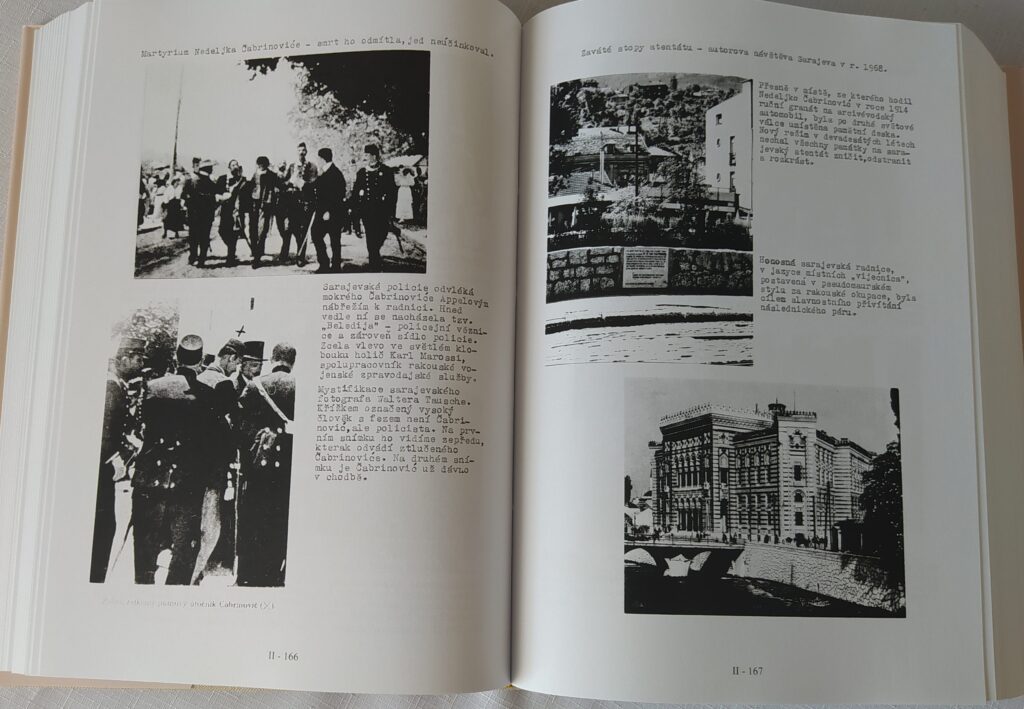

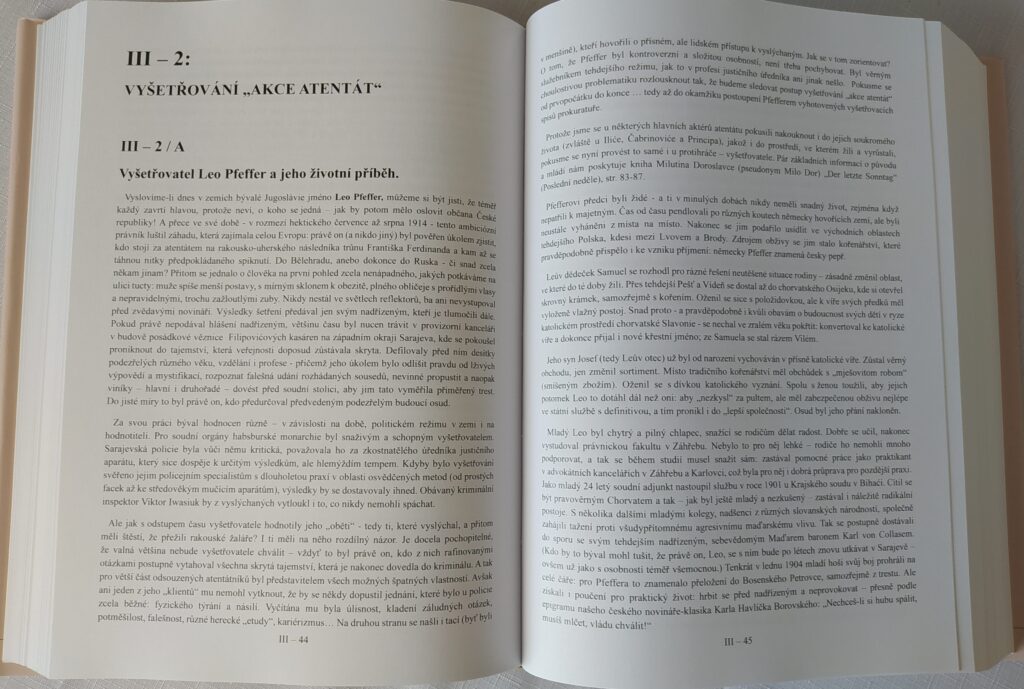

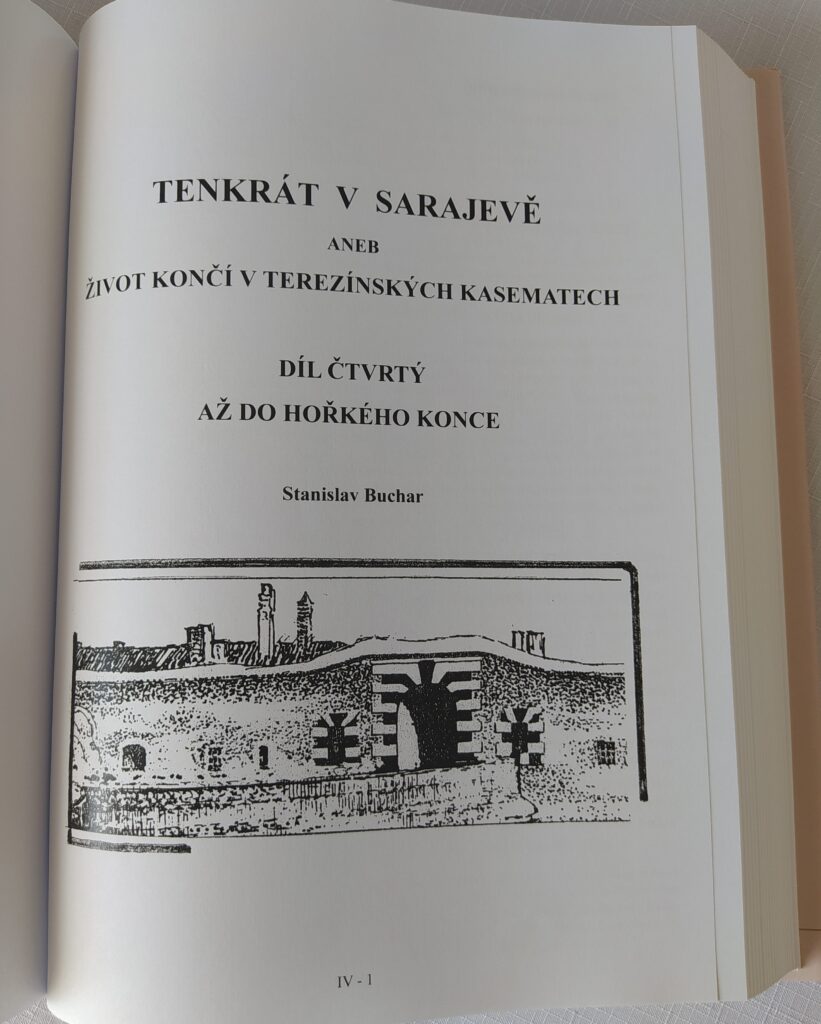

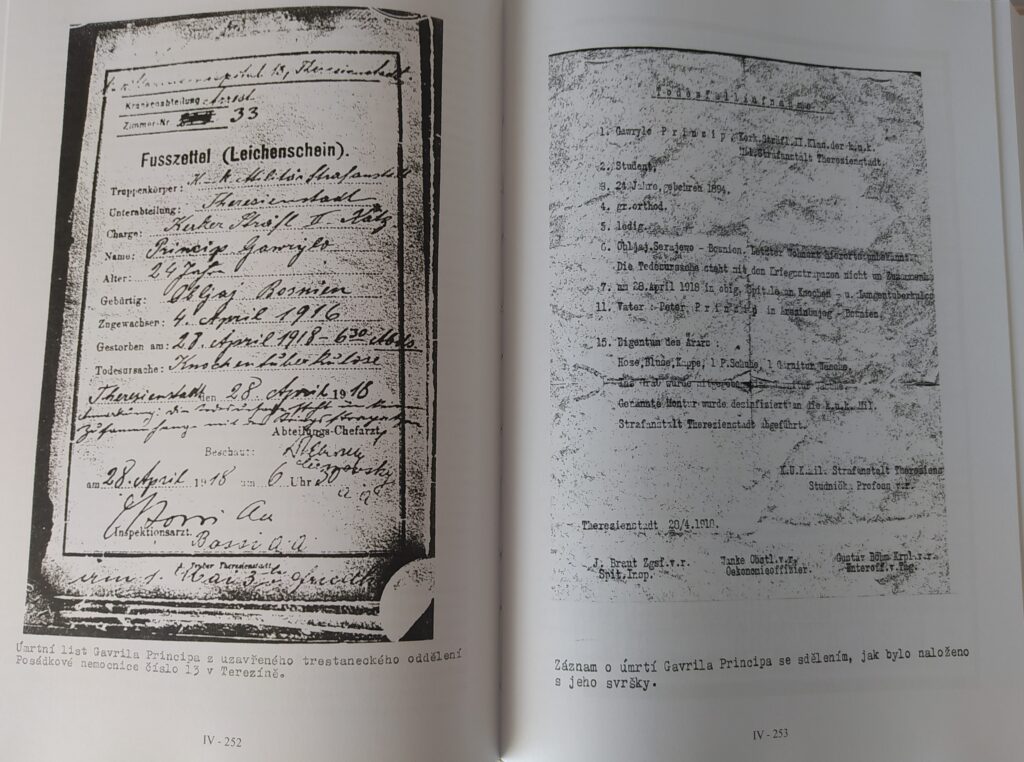

A rarity on the book market - only available here - the last 10 copies from the 50-piece edition are for sale
That Time in Sarajevo - Or Life Ends in the Terezín Casemates
An unusual event on the book market - 1100 pages, 4 kg weight, dimensions 22 cm x 31 cm x 7.5 cm - AN EXTRAORDINARY WORK!!!
Published in a private edition of only 50 pieces!!!!!!
The life's work of private researcher Stanislav Buchar. New findings about the "Sarajevo Assassination". Annotation of the book by Stanislav Buchar: Once upon a time in Sarajevo It is difficult to determine the characteristics of this book, it cannot be expressed in one word. The work is comprehensive, exceptional, interesting, readable, informative and retrospective. It brings some new, previously unpublished findings and historical facts. Its author, Mr. Stanislav Buchar, summarizes the results of his life's research, investigation, search and verification of known and new documents, life stories, wins and losses of people connected with the preparation, execution, investigation and punishment of the actors of the "Sarajevo Assassination" in 1914. Many books have been written about this historical event with different content and level. Mr. Stanislav Buchar's work can be compared, without exaggeration, to the book by historian Vladimir Dedijer: Sarajevo 1914, whose translation into Slovak was published in 1969 in Bratislava. Mr. Buchar discusses many events in more detail. Who is Stanislav Buchar? He is a man who has been researching the assassination in Sarajevo since he was seventeen. Today he is over eighty. He has repeatedly visited Bosnia and places connected with the assassination, and has studied many documents from June 28, 1914 in local archives. He also presents many of them in his book. To achieve this, he learned Serbo-Croatian and also read texts written by hand in cursive. He also cooperates with the Municipal Museum and Gallery in Lomnica nad Popelkou. This is how his activities were evaluated in 2014 by the museum director, Mgr. Jan Drahoňovský: Mr. Stanislav Buchar from Lomnice nad Popelkou, who has been dealing with the topic of the Sarajevo assassination and everything related to it for a long time, will introduce his knowledge to fellow citizens. He is one of the greatest experts on this historical event of world importance in our country, who has also long-term cooperated with Czech Television on the filming of feature documentaries, the common denominator of which is the assassination of the heir to the Austrian throne, Franz Ferdinand d'Este. Mr. Buchar also participated in the realization of the current ongoing exhibition in the museum, primarily by lending photographs, archival materials and three-dimensional objects from his collection, which is dominated by exhibits from the estate of the family of the assassin Gavrilo Princip from the museum in his native village of Obljaj in the northwestern Bosnia region, which was destroyed in the nineties during the military conflict in the former Yugoslavia. In his lecture, Mr. Buchar focuses primarily on the Czech traces in the assassination, of which there are a surprising number. After various vicissitudes, Mr. Buchar decided to publish the book at his own expense. For this reason, only 50 copies of the book with a high-quality binding were produced. The work is very extensive, with almost 1,100 pages of text and photographs in A4 format. The first part discusses the history of Bosnia and Herzegovina, introduces the three main initiators of the assassination, describes from whom they obtained weapons and the journey of the assassins from Belgrade, Serbia to Sarajevo, Bosnia. The content of the second part is the journey of the heir couple to Sarajevo, the preparation of military maneuvers in Bosnia, their course, and the mood of the individual actors during the preparations for the event. The journey of the motorcade through Sarajevo to the city hall and to the shooting site is described in detail. What happened after the assassination is described in the third part. It also includes protocols on the examination of the deceased Highnesses and on the preparation of their bodies for transport to Vienna, including a detailed description of the journey from Sarajevo via Vienna to Arstetten. In the next part of the third volume, the author describes the procedure for investigating the assassination. He introduces the chief investigator Leo Pfeffer and maps his gradual unraveling of the entire case. The investigation was completed in August 1914, and on September 19, 1914, he handed over the investigation materials along with numerous annexes to the state prosecutor's office. The indictment was drawn up on September 24, 1914, and the main trial was scheduled for October 12 to 23, 1914. A total of 25 people were indicted. The author describes the course of the trial and the verdicts handed down. The third part ends with expert assessments of the pistols and hand grenades that the conspirators were equipped with, as well as an explanation of the effects of cyanide on the human body and the justification for why the poison did not kill the assassins after ingestion. The fourth part is about the assassins' stay in prisons. It begins with a description of the requests of five sentenced to death for a commutation of the sentence. Until Emperor Franz Joseph I himself changed the sentence of death for two of the convicts from five to life imprisonment. The decision on the placement of the convicts in prison follows. Princip, Čabrinovič and Grabež were transferred to the c. and k. Military Prison in Terezín. The author describes in detail the difficult conditions of the prisoners' stay in the fortress, their gradual wasting away, increasing health problems and finally their deaths. The testimony about the execution of the three assassins is given in a relatively broad and unusually naturalistic manner. It is supported by quotations from contemporary documents. The reader will also gain information about the master executioner Alois Seyfried. Mr. Buchar has investigated in great detail what happened to the remains of deceased convicts after the end of World War I and documents this with archival documents. Immediately after the collapse of Austria-Hungary, there was an effort to transport the remains of the assassins back to their homeland. The fifth part begins
